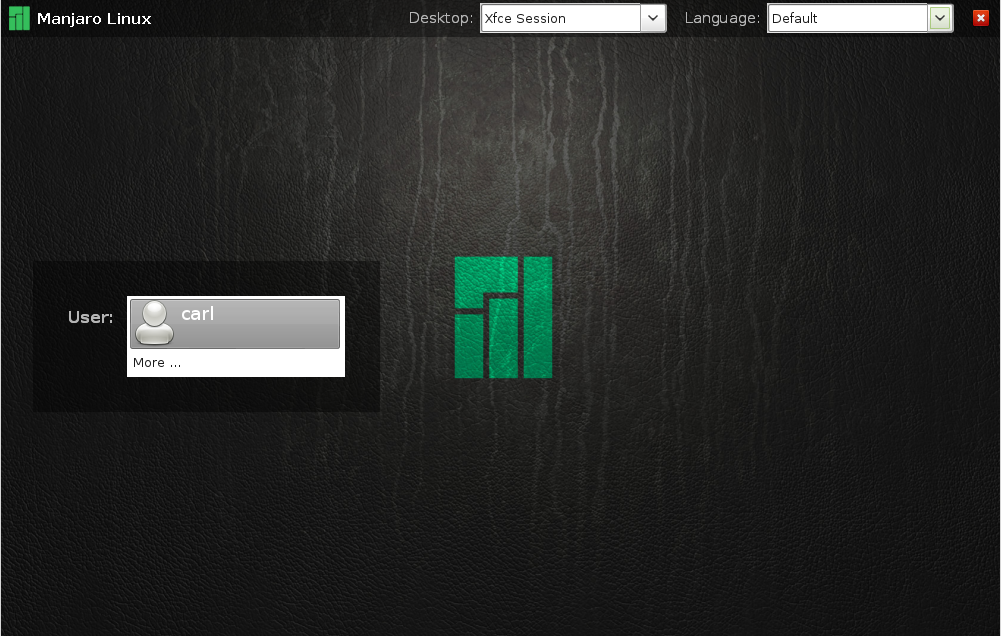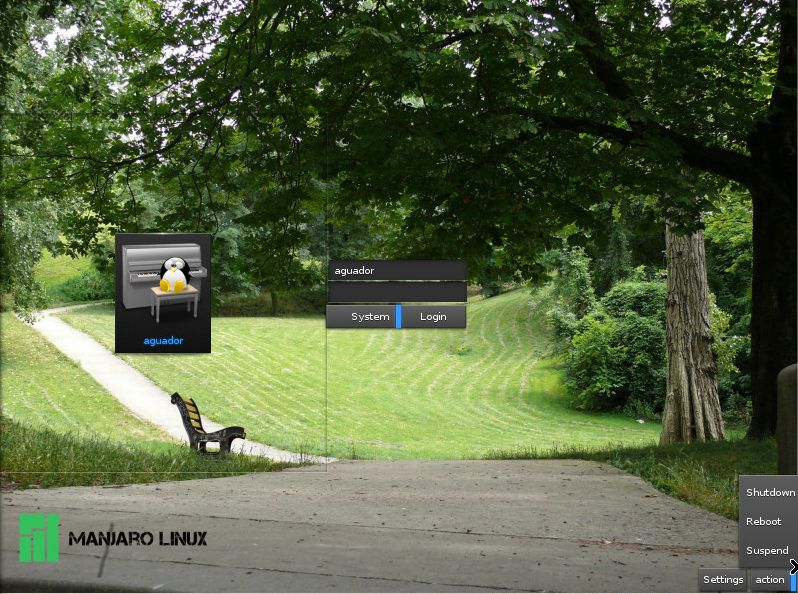Difference between revisions of "Install Display Managers"
Views
Actions
Namespaces
Variants
Tools
imported>Dalto (Update SDDM) |
imported>Dalto (Removed outdated troubleshooting section) |
||
| Line 140: | Line 140: | ||
<br clear="all" /> | <br clear="all" /> | ||
=Plymouth= | =Plymouth= | ||
| Line 149: | Line 147: | ||
lxdm-plymouth.service | lxdm-plymouth.service | ||
sddm-plymouth.service | sddm-plymouth.service | ||
Revision as of 00:08, 22 May 2019
Overview
Display Managers are used to provide login screens, and therefore serve as protective security barriers to prevent unauthorised access to your system. They are also referred to as Login Managers. As with different desktop environments, different display managers will require different system resources to run, and will provide their own unique styles, interfaces, and features. Commonly shared features - particularly in respect to the selection of display managers listed below - include customisation/theming, automatic login, and the selection of multiple desktop environments.
GDM
GDM - the Gnome Display Manager - is designed for use with Gnome 3. It supports theming, automatic login, and the automatic detection and use of multiple desktop environments. Specifically for those using Gnome 3. GDM is typically only paired with a Gnome Desktop Environment because GDM depends on a large amount of the Gnome desktop as dependencies.
GDM can be installed by entering the following command:
pamac install gdm
To enable GDM as your default display manager use the command:
systemctl enable gdm.service --force
To install the Manjaro specific theming for GDM you can use the command:
pamac install manjaro-gdm-theme
LXDM
LXDM - the Lightweight X-Windows Display Manager - is designed for use with any desktop environment. It supports theming, automatic login, easy selection of multiple languages, and the automatic detection and use of multiple desktop environments.
To install LXDM, enter the command:
pamac install lxdm
To enable LXDM as your default display manager use the command:
sudo systemctl enable lxdm.service --force
SDDM
SDDM is a relatively new and lightweight QML-based display manager with minimal dependencies for use with any desktop environment. It supports theming, automatic login, and the automatic detection and use of multiple desktop environments.
To install SDDM, enter the command:
pamac install sddm
To enable SDDM enter the command:
sudo systemctl enable sddm.service --force
LightDM
LigtDM is a light displaymanager without depencies of gnome. With the right greeter it works but need some manual intervention to do it, here some steps.
sudo pacman -S lightdm lightdm-another-gtk-greeter lightdm-another-gtk-greeter-themes accountsservice
First configure the Greeter in /etc/lightdm/lightdm.conf:
sudo nano /etc/lightdm/lightdm.conf
[SeatDefaults] # This sets the lightDM-another-greeter: greeter-session=lightdm-another-gtk-greeter # Depends on Desktop it Sets to your standard desktop: user-session=xfce
LightDM.conf is configured. Now we have to configure the greeter. This a few lines you have to search mostly there you see "#" before it.
sudo nano /etc/lightdm/lightdm-another-gtk-greeter.conf
[appearance] # Greeter theme. Themes are located in “themes” directory (“/usr/share/lightdm-$"): greeter-theme=gtk-greeter-160 # Background color (#RRGGBB) or image: background=/usr/share/backgrounds/xfce/alone.jpg # User styles file: #css-file= # Logo: “file_path” or “#icon_name” #logo= # Gtk theme to use (in this case "greenbird" theme is used): gtk-theme=greenbird # Icons theme to use: icon-theme=kotenza #Not so important font setting: font-name=comfortaa
when all is done you can setup user icons.
sudo systemctl enable accounts-daemon look in /var/lib/AccountsService/users/ for your name if not so then you have to make it.you have to an text file with your username. with this info on board.
[User] Language=nl_BE.utf8 XSession=xfce Icon=/var/lib/AccountsService/icons/<username>.png
you have configured the the icon stuf.
make sure you install xorg-server-xephyr
then u can do lightdm --test-mode to test how it works you get a black window with a patience you see if it working or not. are all certain of it.
Disable the running display manager forst with
sudo systemctl disable mdm # for example
then
sudo systemctl enable lightdm
if you take another greeter it would work te same basicly for more infor you can read this further. -> [1]
Entrance
Entrance is a configurable DM designed for the Enlightenment desktop environment which allows selection of multiple themes, icons, and the enabling of virtual keyboards. The default installation offers a wallpaper with randomly displayed icons for each user account, although a fixed icon can be specified and custom icons compiled and added. When multiple Entrance themes are installed it is possible to have a default theme displayed on startup and individual themes that appear for each user as they begin login.
Entrance is available in the Arch User Repository (AUR) and may be installed with yay using the following command:
yay -S entrance-git
Plymouth
Manjaro no longer ships with Plymouth but for those using Plymouth you should enable the Plymouth specific services instead of the services mentioned above. Specifically, these are:
gdm-plymouth.service lightdm-plymouth.service lxdm-plymouth.service sddm-plymouth.service

